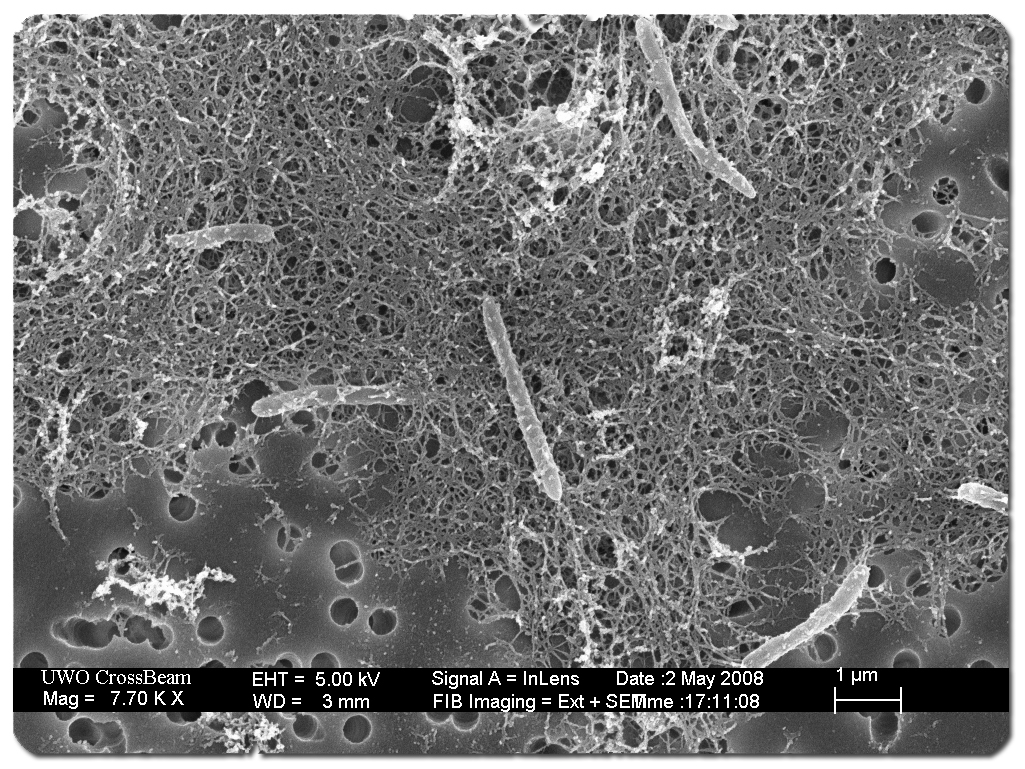Desulforudis audaxviator is a bacterium that lives in the depths of the Earth. It has been found almost two miles below the Earth’s surface. There is no light where it lives and the ground water is over two hundred and eighty degrees Fahrenheit. There is also no oxygen or other organic materials there. The bacterium extracts energy from the decay of uranium in the rocks.
Researchers at the Brazilian Synchrotron Light Laboratory and the University of São Paulo say that this bacterium is a good model for considering the possibility of extraterrestrial life. One of the principle investigators told a Brazilian news agency, “We studied the possible effects of a biologically usable energy source on Europa based on information obtained from an analogous environment on Earth.”
NASA has suggested that there may be hydrothermal vents on Europa like the kind found on the sea floor on Earth. These vents spew chemicals and heat which provides sustenance for life that surrounds the vents. While the hydrothermal organisms do not rely on sunlight for energy, they do rely on oxygen in the water that is generated by other organisms near the surface which do utilize sunlight.
Desulforudis audaxviator does not rely on oxygen in the water to survive. It was found in the ground water from the Mponeng gold mine in South Africa. It is the only life form in its ecosystem and does not rely on any other organisms. The principle researcher says “This very deep subterranean mine has water leaking through cracks that contain radioactive uranium. The uranium breaks down the water molecules to produce free radicals. The free radicals attack the surrounding rocks, especially pyrite, producing sulfate. The bacteria use the sulfate to synthesise ATP [adenosine triphosphate], the nucleotide responsible for energy storage in cells. This is the first time an ecosystem has been found to survive directly on the basis of nuclear energy.”
The researchers say that the same conditions that form the environment for desulforudis audaxviator may exist on Europa. According to NASA, life on Europa would require three ingredients. These three ingredients are water, heat and chemicals necessary to life.
Astronomers believe that there is a vast ocean on Europa beneath the icy crust. Heat is generated by the elliptical orbit of Europa around Jupiter. The tidal forces intensify at certain points in Europa’s orbit. The resulting deformations of the moon results in the generation of heat. The chemistry of Europa’s ocean is the most difficult to identify.
The principle investigator says that radioactive materials have “been detected and measured on Earth, in the meteorites that come to Earth, and on Mars. So we can say with some certainty that this must have occurred on Europa as well. In our study, we worked with three radioactive elements: uranium, thorium and potassium, the most abundant in the terrestrial context. Based on the percentages found on Earth, in meteorites and on Mars, we can predict the amounts that probably exist on Europa.” The research showed that radioactive materials probably exist on Europa in the same amounts that are found on Earth. The only open question is whether or not there are sufficient pyrites on Europa to provide the sulfur needed by Desulforudis audaxviator-type organisms.
The principle investigator said “The ocean bed on Europa appears to offer very similar conditions to those that existed on primitive Earth during its first billion years. So studying Europa today is to some extent like looking back at our own planet in the past. In addition to the intrinsic interest of Europa’s habitability and the existence of biological activity there, the study is also a gateway to understanding the origin and evolution of life in the Universe.”
Desulforudis audaxviator:
